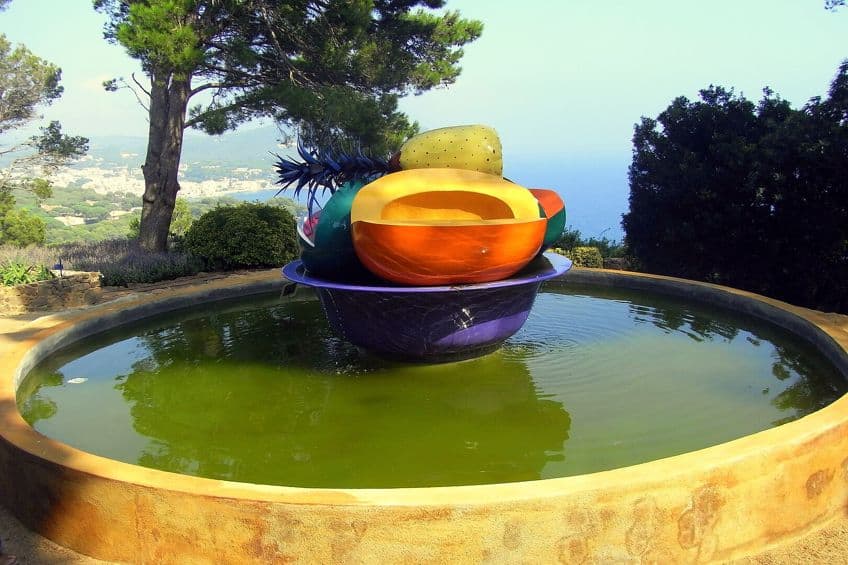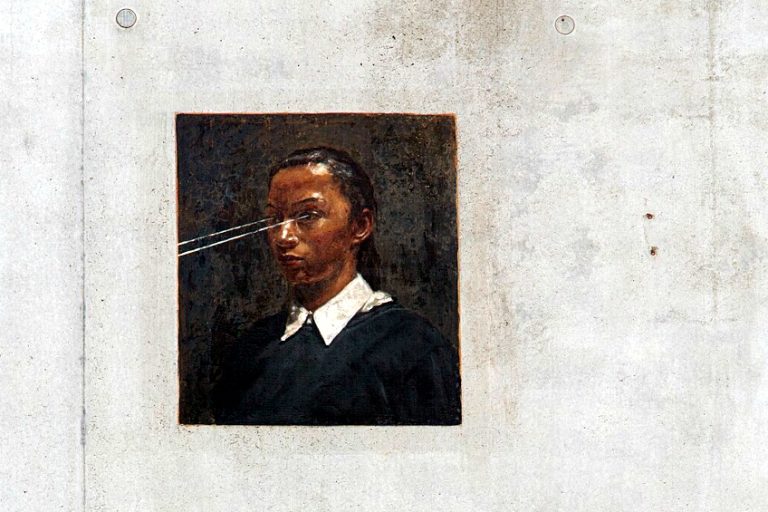Ana Mercedes Hoyos – A Visionary Colombian Artist
Ana Mercedes Hoyos, a distinguished Colombian artist, left a memorable mark on the world of art with her profound creativity and unique artistic vision. Her remarkable journey as an artist is woven with a diverse range of influences and experiences that shaped her illustrious career. In this article, we delve into the captivating Ana Mercedes Hoyos biography, exploring the milestones and artistic contributions that defined her as a prominent figure in the Colombian art scene and beyond.
Table of Contents
Ana Mercedes Hoyos Biography: A Visionary Colombian Artist
| Date of Birth | 29 September 1942 |
| Date of Death | 5 September 2014 |
| Place of Birth | Bogotá, Colombia |
| Nationality | Colombian |
| Associated Art Movements | Modern Art |
Ana Mercedes Hoyos was born on 29 September 1942, in Bogotá, Colombia. Growing up in a family that valued culture and the arts, her childhood was enriched with exposure to the rich Colombian heritage and artistic traditions.
Influences
Hoyos’ artistic sensibilities were influenced by a multitude of sources. Her exposure to the works of renowned Colombian muralists such as Pedro Nel Gómez (1899-1948) and Santiago Martínez Delgado (1906-1954) during her formative years had a lasting effect on her appreciation for large-scale and socially conscious art.
Additionally, the vibrant folk art and indigenous crafts of Colombia served as a wellspring of inspiration, inspiring her to infuse her works with a sense of cultural uniqueness and ancestry.
Training and Early Artworks
Hoyos pursued her artistic training at the National University of Colombia’s School of Fine Arts in Bogotá, where she honed her skills in various media, including painting and printmaking. During her early career, she experimented with different artistic styles, but it was her exploration of abstraction and the use of lively colors that marked a turning point in her creative journey.

Major Career Achievements
Hoyos’ career was defined by significant achievements that solidified her position as a leading figure in Colombian art. In the 1970s, she gained international recognition with her series depicting geometric atmospheres, which featured large-scale paintings adorned with geometric patterns. These paintings not only celebrated Colombian culture but also addressed pressing social and environmental issues. Her art also caught the attention of international audiences, leading to numerous exhibitions in Europe and the Americas. In 1993, Hoyos was appointed as Colombia’s Ambassador to UNESCO, a unique and prestigious role for an artist.
During her tenure, she continued to advocate for the promotion of art and culture, using her platform to foster dialogue and understanding between nations.
Her Influence on Art History in General
Ana Mercedes Hoyos’ artistic contributions have left an enduring impact on Colombian and Latin American art history. Her daring use of color, geometric abstraction, and socially committed themes served as a catalyst for a new generation of artists seeking to celebrate their cultural heritage while addressing global issues through their art. Her murals and public installations continue to adorn cityscapes and cultural institutions, acting as a testament to the power of art in shaping societal narratives.

Ana Mercedes Hoyos’s Art: A Reflection of Colombian Socio-Political Climate
Ana Mercedes Hoyos created a body of work that bore witness to the turbulent socio-political climate of her native country. As a prominent figure in the Colombian art scene, Hoyos’ paintings and prints transcended mere aesthetics, capturing the complexities of Colombian society and addressing demanding social issues. .
This section of the article delves into how Ana Mercedes Hoyos’s art was contextualized within the Colombian socio-political climate of her era and explores the key moments in her career that shaped her artistic vision
Colombia’s Cultural Heritage
Hoyos’ early exposure to Colombia’s deep cultural heritage profoundly influenced her artistic sensibilities. The vibrant colors and indigenous crafts of her homeland became a prominent motif in her art, celebrating Colombia’s diverse traditions and cultural identity. In her works, she sought to preserve and elevate Colombia’s cultural heritage, fostering a sense of pride and belonging among her fellow countrymen.
Geometric Abstraction and Social Engagement
During the 1960s, Hoyos embraced geometric abstraction as her chosen artistic style. However, her art was not confined to formal aesthetics alone. She skillfully integrated socially conscious themes into her geometric compositions, using her art as a vehicle to address issues such as poverty, inequality, and environmental degradation.
By combining artistry and activism, Hoyos challenged the status quo and called for positive societal change.
Challenges and Triumphs in Her Career
Hoyos faced both challenges and triumphs in her artistic career. While her proactive use of colors and abstraction garnered acclaim, her socially contended themes often confronted resistance from the establishment. Nevertheless, her determination and passion for social justice persisted, and she continued to push the boundaries of her art. Her appointment as Colombia’s Ambassador to UNESCO further elevated her standing as an artist and cultural ambassador, enabling her to advocate for art and cultural heritage on an international stage.
https://www.youtube.com/watch?v=pxhbqL2fn10
Ana Mercedes Hoyos’s Art
Ana Mercedes Hoyos’s art is characterized by a unique blend of flatted forms and energetic colors, which she skillfully employs to create visually captivating compositions. Her technical prowess lies in the seamless fusion of Colombian cultural motifs with modernist aesthetics.
Through her mastery of geometric forms, she creates a sense of harmony and balance, evoking a sense of order and structure amidst the complexities of her themes.
The use of fierce and decadent colors reflects her deep appreciation for Colombia’s diverse cultural roots. The technical characteristics of Ana Mercedes Hoyos’s art reveal her exceptional ability to intertwine artistic expression with social consciousness, leaving a lasting impression on the art world and cementing her legacy as a visionary Colombian artist.
Visual Analysis of San Basillio I (2005)
| Title | San Basillio I |
| Date | 2005 |
| Medium | Lithograph, signed and numbered in pencil |
| Dimensions (cm) | 50.8 x 76.2 |
| Art Movement | Modern Art |
| Location | N/A |
In San Basillio I by Ana Mercedes Hoyos, depicting San Basilio de Palenque girls who could be in school uniform or nice church dresses, the composition is thoughtfully crafted to convey a sense of unity and community. The girls stand in a close-knit group, forming a strong visual bond that draws the viewer’s attention to the heart of the painting.
The arrangement of the figures creates a sense of mystery and dynamism as all the girls are faced away from the viewer of the painting. The artist’s use of geometric abstraction is evident in the precise lines and shapes that define the figures and their dresses. This intentional arrangement and geometric approach add a sense of order and balance to the overall composition, enhancing the visual impact of the artwork.
Color and Light
In this painting, Ana Mercedes Hoyos employs a vibrant color palette, reflecting her deep appreciation for Colombia’s diverse cultural traditions. Bold and rich colors are used to represent the lively spirit of the schoolgirls and the community they belong to. The use of bright hues creates a sense of vitality and energy, enhancing the overall dynamism of the composition. The lighting in the artwork is skillfully used to illuminate the figures and emphasize their presence, adding depth and dimension to the scene.
Perspective and Form
The perspective in the artwork creates a sense of intimacy and closeness with the girls as if the viewer is standing behind them, sharing in their experience. The artist’s adept use of form brings the figures to life, imbuing them with a three-dimensional quality that gives the painting a sense of depth and realism.
The girls’ uniformity of form also underscores their collective identity and shared sense of purpose.
Conceptual Analysis of San Basilio I: Cultural Identity and Heritage
Ana Mercedes Hoyos’s art often delves into themes of cultural identity and heritage. San Basilio I explores the unique heritage of the Colombian community of San Basilio de Palenque. The artwork celebrates the traditions, history, and customs of this Afro-Colombian community, using symbols and motifs that evoke the essence of their cultural legacy.
African Diaspora and Social History
Hoyos’s works often address issues related to the African diaspora and the historical context of African descendants in the Americas. San Basilio I touches upon the legacy of the African roots of San Basilio de Palenque, a town founded by escaped African slaves in the 17th century. The painting serves as a tribute to the resilience, history, and cultural contributions of the Afro-Colombian community.
Geometric Abstraction and Visual Language
Geometric abstraction is a common feature in Ana Mercedes Hoyos’s art. In San Basilio I, she employs geometric forms and lines to create a sense of order and structure in the composition. The precise use of geometric elements could add depth and symbolism to the artwork, inviting viewers to explore multiple layers of meaning.
Social Engagement and Advocacy
Ana Mercedes Hoyos’s art is socially engaged, reflecting her deep concern for societal issues. San Basilio I serves as a visual advocacy piece, drawing attention to the cultural preservation, recognition, and empowerment of marginalized communities like San Basilio de Palenque.
Through her art, Hoyos could aim to amplify the voices and experiences of the Afro-Colombian community, fostering dialogue and appreciation for their contributions.
Color Palette and Symbolic Meanings
Hoyos’s use of colors is known for its significance and symbolic meaning. In San Basilio I, the colors chosen carry cultural or emotional significance. Bold and vibrant colors could evoke the energy, vitality, and vivacity of the community of San Basilio de Palenque, symbolizing their rich heritage and cultural expressions.

In conclusion, Ana Mercedes Hoyos’s remarkable journey as a Colombian artist is a testament to her profound artistic vision and unwavering commitment to social attention. Through her skillful blend of geometric conception and dynamic colors, she celebrated Colombia’s diverse cultural lineage and addressed pressing societal problems. Her biography reveals a trailblazing artist who used her talent to advocate for marginalized communities, leaving a lasting impact on the art world and beyond. As we reflect on the legacy of Ana Mercedes Hoyos, we are reminded of the transformative power of art as a catalyst for social change and cultural preservation. Her artistic contributions continue to inspire generations, cementing her place as a visionary Colombian artist whose legacy will endure for years to come.
Frequently Asked Questions
What Happened to Ana Mercedes Hoyos?
Ana Mercedes Hoyos passed away on 5 September 2014, leaving behind a profound legacy as a visionary Colombian artist. Her contributions to the art world, with a focus on geometric abstraction and vibrant colors that celebrated Colombia’s cultural heritage, continue to inspire artists and art enthusiasts alike. Beyond her artistic endeavors, Hoyos also served as Colombia’s Ambassador to UNESCO, advocating for the promotion of art and cultural heritage on an international stage. While she is no longer with us, her artistic and cultural impact endures, solidifying her position as a prominent figure in the history of Colombian art.
What Inspired Ana Mercedes Hoyos?
Ana Mercedes Hoyos drew inspiration from a diverse array of sources that shaped her artistic vision and creative expression. One of the most significant influences on her art was her Colombian heritage, where she found inspiration in the vibrant colors, rich cultural traditions, and indigenous crafts of her homeland. Additionally, her exposure to the works of renowned Colombian muralists, such as Pedro Nel Gómez and Santiago Martínez Delgado, during her formative years ignited her passion for large-scale art with social consciousness. The history and struggles of the Afro-Colombian community, especially in places like San Basilio de Palenque, also served as a profound source of inspiration for Hoyos, leading her to explore themes of cultural identity, resilience, and empowerment in her works. These diverse influences converged to shape her unique artistic style, marked by geometric abstraction and socially engaged themes, making Ana Mercedes Hoyos a celebrated and influential figure in Colombian art.
Nicolene Burger is a South African multi-media artist, working primarily in oil paint and performance art. She received her BA (Visual Arts) from Stellenbosch University in 2017. In 2018, Burger showed in Masan, South Korea as part of the Rhizome Artist Residency. She was selected to take part in the 2019 ICA Live Art Workshop, receiving training from art experts all around the world. In 2019 Burger opened her first solo exhibition of paintings titled, Painted Mantras, at GUS Gallery and facilitated a group collaboration project titled, Take Flight, selected to be part of Infecting the City Live Art Festival. At the moment, Nicolene is completing a practice-based master’s degree in Theatre and Performance at the University of Cape Town.
In 2020, Nicolene created a series of ZOOM performances with Lumkile Mzayiya called, Evoked?. These performances led her to create exclusive performances from her home in 2021 to accommodate the mid-pandemic audience. She also started focusing more on the sustainability of creative practices in the last 3 years and now offers creative coaching sessions to artists of all kinds. By sharing what she has learned from a 10-year practice, Burger hopes to relay more directly the sense of vulnerability with which she makes art and the core belief to her practice: Art is an immensely important and powerful bridge of communication that can offer understanding, healing and connection.
Nicolene writes our blog posts on art history with an emphasis on renowned artists and contemporary art. She also writes in the field of art industry. Her extensive artistic background and her studies in Fine and Studio Arts contribute to her expertise in the field.
Learn more about Nicolene Burger and the Art in Context Team.
Cite this Article
Nicolene, Burger, “Ana Mercedes Hoyos – A Visionary Colombian Artist.” Art in Context. August 30, 2023. URL: https://artincontext.org/ana-mercedes-hoyos/
Burger, N. (2023, 30 August). Ana Mercedes Hoyos – A Visionary Colombian Artist. Art in Context. https://artincontext.org/ana-mercedes-hoyos/
Burger, Nicolene. “Ana Mercedes Hoyos – A Visionary Colombian Artist.” Art in Context, August 30, 2023. https://artincontext.org/ana-mercedes-hoyos/.










